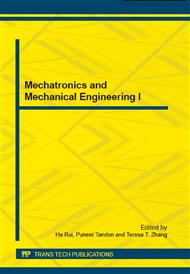p.226
p.231
p.236
p.243
p.250
p.254
p.263
p.268
p.274
The Influence of Subway’s Underground Facilities Operation on the Natural Thermal Conditions of Adjacent Soil
Abstract:
This paper contains the results of research dedicated to improving the energy efficiency of Moscow subway facilities and creation of stations with "zero" external sources heat consumption. The paper presents a method of simulation of the thermal conditions for subway tunnels, which allows overcoming the difficulties associated with the informative uncertainty of baseline data, as well as difficulties associated with the approximation of the external parameters, affecting the soil's thermal conditions. Advantage of this method in comparison with the traditional approach to the modeling of thermal processes in such systems is the fact that the usage of so-called "base" experimentally obtained information about the natural soil thermal conditions in this model, can partially take into account the whole range of factors (such as presence of the groundwater, it's speed and thermal conditions, the structure and location of the soil layers, the "thermal" background from the Earth, precipitation, phase transformation of moisture in the pore space, and more), which have significant influence on the formation of the thermal regime of the tunnel but are almost impossible to be taken into account within the strict formulation of the problem today. The method has been implemented in the software package INSOLAR.GSHP.12, created by JSC "INSOLAR-INVEST".
Info:
Periodical:
Pages:
250-253
Citation:
Online since:
October 2014
Authors:
Price:
Сopyright:
© 2014 Trans Tech Publications Ltd. All Rights Reserved
Share:
Citation:


